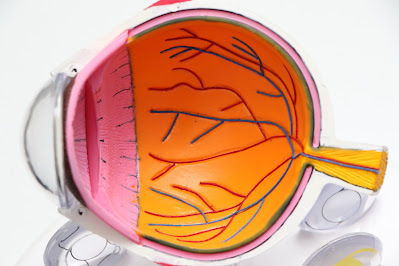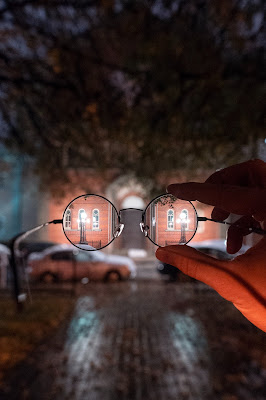Although most of us take our ability to see for granted, there are almost 285 million visually impaired persons worldwide, 39 million of whom are totally blind.
Blindness can make a person more reliant on others, even for simple chores, which can lower the quality of their life. New treatments for blindness are being developed as a result of developments in medical science and technology. And we'll examine one of these technologies in more in this post.
Everybody has seen Robocop's bionic eye. Although we haven't nearly developed enough to have a fully bionic eye, we are on the right track. It appears that a research team at Monash University has made some great advancements in the effort to restore eyesight for those who are blind or visually impaired.
The bionic vision system from Gennaris
The Monash Vision Group at Monash University and a team of researchers there collaborated to create the Gennaris Bionic Vision system.
Optical Nerve
For blind patients with injured optic nerves that prevent visual information from traveling from the retina of the eye to the visual cortex of the brain, there is a device called the Gennaris bionic vision system, or simply The Bionic Eye.
In essence, the Monash University team's bionic eye may avoid these injured optic nerves by establishing a different path for the visual information to flow from the retina to the visual cortex of the brain. Because of the incapability of current technology to accomplish this, the bionic eye created by Monash University is predicted to be a modern-day scientific marvel.
Currently, the bionic eye will not fully restore vision; rather, it will give the blind the ability to walk around freely while viewing a highly pixelated image. Let's examine it now.
Understanding the bionic eye's operation will aid people who are blind or sight impaired
Whenever someone looks at the camera, it records it. The video processor positioned on the side of the headpiece receives visual data from the camera. The vision processor converts the camera's video input into a very simple, pixelated form before sending the result to a wireless transmitter.
The Gennari's bionic vision system is made up of various components that together function as one unit. There is a piece of headwear first. These unique eyewear pieces instead of having glass lenses feature cameras.
The user will experience a severely pixelated image as their visual. Therefore, a blind person using a bionic eye will see a ball depicted as a circle of pixels whereas a person with normal vision would perceive a ball.
A collection of 9mm-thin tiles that must be implanted into the brain will receive the video processor's output from the wireless transmitter. The visual cortex can be stimulated at up to 43 different places using approximately ten implants. The electric circuits in the tiles will transform the wireless transmitter's data into brain-friendly electric impulses.
It was particularly challenging to design the headgear and implants since they needed to be precise, sturdy, and biomechanically pleasant to allow for a seamless transfer from the wireless transmitter to the implanted tiles. One of the scientists on the team developing the bionic eye, Dr. Arthur Lowery, said this.
Our system uses combinations of up to 473 light spots to produce a visual pattern that informs users about outdoor environments and helps them recognize the presence of people and objects nearby.
The bionic eye has undergone successful testing in preliminary studies on sheep. After being pneumatically implanted into the sheep's brains, the tiles underwent over 200 hours of testing. The prosthetic eye had no negative impacts on the sheep, who responded positively to it.
The team is actually trying to undertake human trials for the bionic eye as proof of concept demonstrations. If the bionic eye is a success, as it is most likely to be, then those who are blind owing to injured optic nerves will be able to use it. Despite appearing to be a pretty straightforward technique, it took almost a decade to develop. The good news is that this is just the initial iteration of the bionic eye, and as technology advances, the systems will get more advanced.
The likelihood of shrinking the 9mm tiles to a size that is only minimally intrusive is very high. To construct a human-machine interface, Neuralink is already developing hair-thin chips that may be implanted onto a robot.
If that technology is applied to the bionic eye, we may see an enhanced and improved version of the bionic eye in a few years that may have an even greater viewing capacity. The bionic eye is currently heralded as a technological marvel.
The Monash Vision Group, which created the bionic eye, is attempting to advance this technology to aid people with neurological diseases like paralysis that is incurable. Let's hope that the bionic eye passes human trials and is freely accessible to those who need it most—the blind.
Optic Nerve Damage
While this is wonderful news for those who are blind, it's important to note that the Monash Vision Group's bionic eye technology is only for those who have damaged optic nerves. However, there are a variety of causes of blindness.
The first medical facility to offer a bionic eye implant for blind persons with retinal impairment was Tufts Medical Center in New England in 2017. An uncommon condition called retinal damage first affects peripheral vision before progressing to total blindness.
External Perception
This disorder prevents the transfer of visual information to the visual cortex because the light-sensitive tissue at the rear of the retina deteriorates and loses its capacity to perceive light.
A team of scientists and medical professionals from "Second Sight" developed a bionic eye system that is quite similar to the one being developed by the Monash Vision Group. For individuals with retinal damage rather than optic nerve loss, the prosthetic eye from Second Sight is used.
The Argus II bionic eye from Second Sight features an implanted electrode that must be surgically put beneath the white portion of the eye. In order to transmit visual information to the visual cortex, the electrode first absorbs visual information and then stimulates the light-sensitive tissue at the rear of the retina.
Until a video processor collects data from a camera, this electrode receives visual data from a wireless transmitter attached to that processor. Similar to the bionic eye developed by the Monash Vision Group, Argus II does not completely restore sight, but it does enable the wearer to see light and light reflections.
It's fantastic that more than 350 people have received Argus II implants so far because this may encourage other researchers to advance the technology even further! It's all done now!
What do you think of the Bionic Eye Project, to sum up? Are you anticipating the further advancement of this technology?


.jpg)


_11zon.png)

No comments:
Post a Comment